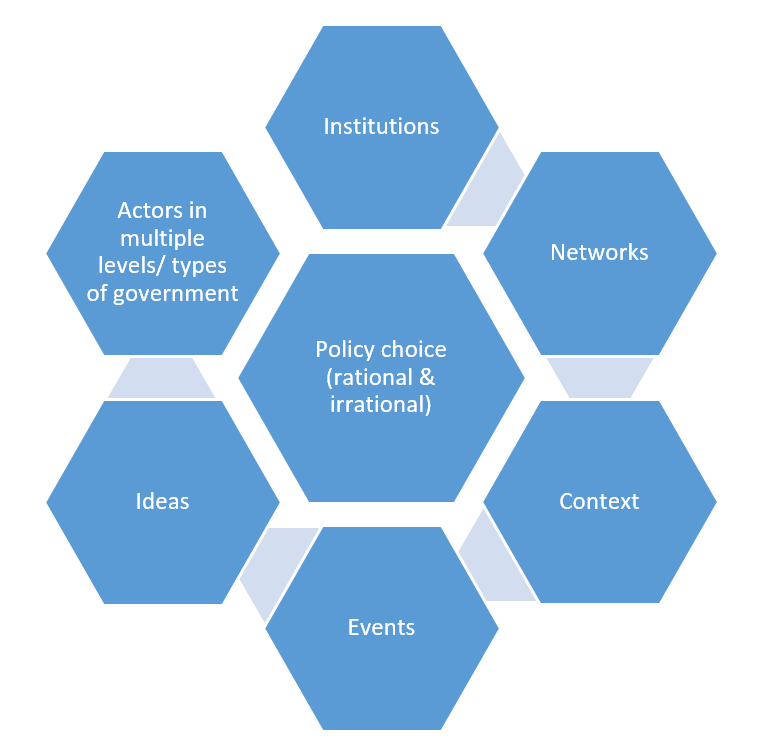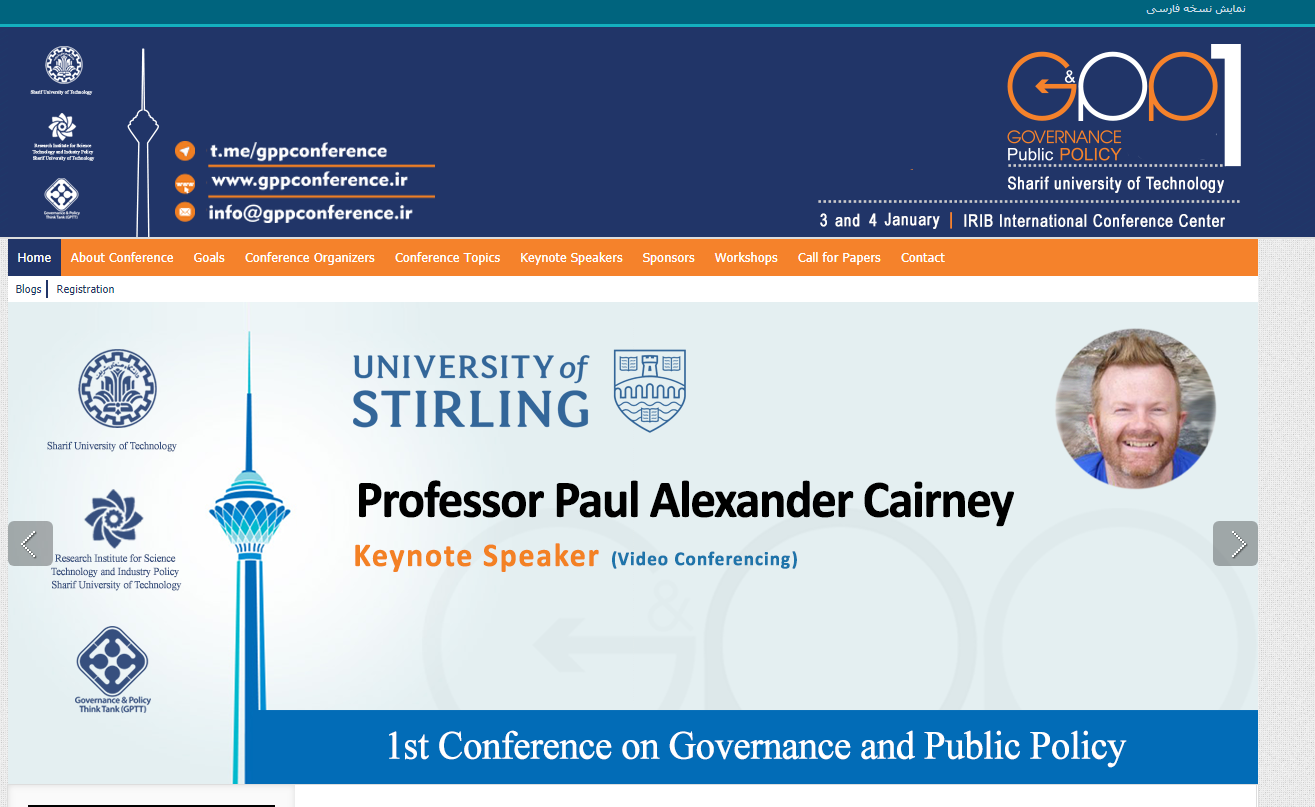Paul Cairney, Emily St Denny, Heather Mitchell
This post summarises new research on the health equity strategy Health in All Policies. As our previous post suggests, it is common to hope that a major event will create a ‘window of opportunity’ for such strategies to flourish, but the current COVID-19 experience suggests otherwise. If so, what do HIAP studies tell us about how to respond, and do they offer any hope for future strategies? The full report is on Open Research Europe, accompanied by a brief interview on its contribution to the Horizon 2020 project – IMAJINE – on spatial justice.
COVID-19 should have prompted governments to treat health improvement as fundamental to public policy
Many had made strong rhetorical commitments to public health strategies focused on preventing a pandemic of non-communicable diseases (NCDs). To do so, they would address the ‘social determinants’ of health and health inequalities, defined by the WHO as ‘the unfair and avoidable differences in health status’ that are ‘shaped by the distribution of money, power and resources’ and ‘the conditions in which people are born, grow, live, work and age’.
COVID-19 reinforces the impact of the social determinants of health. Health inequalities result from factors such as income and social and environmental conditions, which influence people’s ability to protect and improve their health. COVID-19 had a visibly disproportionate impact on people with (a) underlying health conditions associated with NCDs, and (b) less ability to live and work safely.
Yet, the opposite happened. The COVID-19 response side-lined health improvement
Health departments postponed health improvement strategies and moved resources to health protection.
This experience shows that the evidence does not speak for itself
The evidence on social determinants is clear to public health specialists, but the idea of social determinants is less well known or convincing to policymakers.
It also challenges the idea that the logic of health improvement is irresistible
Health in All Policies (HIAP) is the main vehicle for health improvement policymaking, underpinned by: a commitment to health equity by addressing the social determinants of health; the recognition that the most useful health policies are not controlled by health departments; the need for collaboration across (and outside) government; and, the search for high level political commitment to health improvement.
Its logic is undeniable to HIAP advocates, but not policymakers. A government’s public commitment to HIAP does not lead inevitably to the roll-out of a fully-formed HIAP model. There is a major gap between the idea of HIAP and its implementation. It is difficult to generate HIAP momentum, and it can be lost at any time.
Instead, we need to generate more realistic lessons from health improvement and promotion policy
However, most HIAP research does not provide these lessons. Most HIAP research combines:
- functional logic (here is what we need)
- programme logic (here is what we think we need to do to achieve it), and
- hope.
Policy theory-informed empirical studies of policymaking could help produce a more realistic agenda, but very few HIAP studies seem to exploit their insights.
To that end, this review identifies lessons from studies of HIAP and policymaking
It summarises a systematic qualitative review of HIAP research. It includes 113 articles (2011-2020) that refer to policymaking theories or concepts while discussing HIAP.
We produced these conclusions from pre-COVID-19 studies of HIAP and policymaking, but our new policymaking context – and its ironic impact on HIAP – is impossible to ignore.
It suggests that HIAP advocates produced a 7-point playbook for the wrong game
The seven most common pieces of advice add up to a plausible but incomplete strategy:
- adopt a HIAP model and toolkit
- raise HIAP awareness and support in government
- seek win-win solutions with partners
- avoid the perception of ‘health imperialism’ when fostering intersectoral action
- find HIAP policy champions and entrepreneurs
- use HIAP to support the use of health impact assessments (HIAs)
- challenge the traditional cost-benefit analysis approach to valuing HIAP.
Yet, two emerging pieces of advice highlight the limits to the current playbook and the search for its replacement:
- treat HIAP as a continuous commitment to collaboration and health equity, not a uniform model; and,
- address the contradictions between HIAP aims.
As a result, most country studies report a major, unexpected, and disappointing gap between HIAP commitment and actual outcomes
These general findings are apparent in almost all relevant studies. They stand out in the ‘best case’ examples where: (a) there is high political commitment and strategic action (such as South Australia), or (b) political and economic conditions are conducive to HIAP (such as Nordic countries).
These studies show that the HIAP playbook has unanticipated results, such as when the win-win strategy leads to HIAP advocates giving ground but receiving little in return.
HIAP strategies to challenge the status quo are also overshadowed by more important factors, including (a) a far higher commitment to existing healthcare policies and the core business of government, and (b) state retrenchment. Additional studies of decentralised HIAP models find major gaps between (a) national strategic commitment (backed by national legislation) and (b) municipal government progress.
Some studies acknowledge the need to use policymaking research to produce new ways to encourage and evaluate HIAP success
Studies of South Australia situate HIAP in a complex policymaking system in which the link between policy activity and outcomes is not linear.
Studies of Nordic HIAP show that a commitment to municipal responsibility and stakeholder collaboration rules out the adoption of a national uniform HIAP model.
However, most studies do not use policymaking research effectively or appropriately
Almost all HIAP studies only scratch the surface of policymaking research (while some try to synthesise its insights, but at the cost of clarity).
Most HIAP studies use policy theories to:
- produce practical advice (such as to learn from ‘policy entrepreneurs’), or
- supplement their programme logic (to describe what they think causes policy change and better health outcomes).
Most policy theories were not designed for this purpose.
Policymaking research helps primarily to explain the HIAP ‘implementation gap’
Its main lesson is that policy outcomes are beyond the control of policymakers and HIAP advocates. This explanation does not show how to close implementation gaps.
Its practical lessons come from critical reflection on dilemmas and politics, not the reinvention of a playbook
It prompts advocates to:
- Treat HIAP as a political project, not a technical exercise or puzzle to be solved.
- Re-examine the likely impact of a focus on intersectoral action and collaboration, to recognise the impact of imbalances of power and the logic of policy specialisation.
- Revisit the meaning-in-practice of the vague aims that they take for granted without explaining, such as co-production, policy learning, and organisational learning.
- Engage with key trade-offs, such as between a desire for uniform outcomes (to produce health equity) but acceptance of major variations in HIAP policy and policymaking.
- Avoid reinventing phrases or strategies when facing obstacles to health improvement.
We describe these points in more detail here:
Our Open Research Europe article (peer reviewed) The future of public health policymaking… (europa.eu)
Paul summarises the key points as part of a HIAP panel: Health in All Policies in times of COVID-19
ORE blog on the wider context of this work: forthcoming
















































